Animals That Begin With X -Do you know any animals that begin with the letter X? If you need help, this blog post is here for you! I have a list of 15 interesting animals that start with X. Read on to find out more about these amazing creatures!
There are all sorts of quirky and unique animals globally, and with it, they are given many appropriate names. This has been the most common way for the scientific naming and normal local names of these animals. And rarer are animals that have names that begin with X.
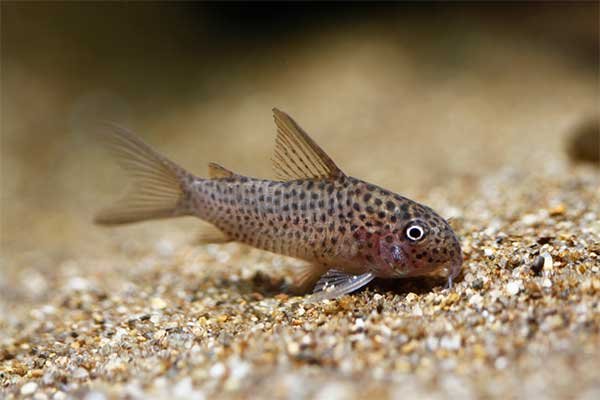
Just like that one cool kid that stands out in the class. Any animal with a name that starts with the letter X has a cool factor to it.
What’s better than one animal that names start with x, is 15 animal names that start with X.
1. X-Ray Tetra–Animals That Begin With X
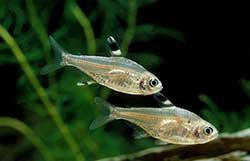
Pristella maxillaris is a tropical aquarium fish that originates from Ocean basins and Amazon.
It has translucent skin, which renders its internals to be see-through, which leads to its name. This fish has black, yellow, and white stripes on its body, and its tiny body reaches about 3 to 5 cm in length.
They live in the coastal waters of Brazil and the Amazon. They live in schools and are docile creatures. They feed on smaller plants and animals alike.
2. Xerus
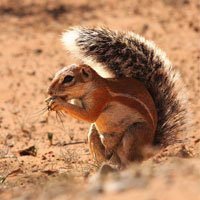
Xerus or south African ground squirrels are quite amazing little animals. Despite the huge diversity of the terrestrial parts of the African wilderness, these animals can live just about anywhere that has any place to burrow in or climb upon. These squirrels are quite resilient even if they are in danger.
They can weigh about 1.5 or 3,3 pounds kgs and grow up to 45 cm in length. They are colored chestnut brown with white and black stripes on their back. They are vegetarians and feed on roots and bulbs of plants.
3. Xantic Sargo
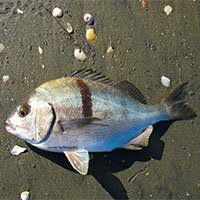
Anisotremus davidsonii or Xantic Sargo is a fish from the grunt family that lives in Californian rocky waters and Mexico. They get their names from the grunting sound they make while eating,
They can grow up to 8 to 22 inches in length and weigh from 6 to 11 pounds. They have a long body with pouty lips and spiky fins on the back. They live under coral reefs and sandy areas. They feed on mollusks and crustaceans most often.
They have spiky fins and need to be handled with care and caution.
4. Xantus’s Hummingbird
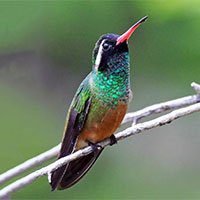
Basilinna xantusii are humming bards that are found in the Baja Californian peninsula. These birds are absolutely tiny, weighing about 3 to 4 grams, and length can only grow to 3.5 inches in length.
They are green-colored on the back and have reddish-brown tails with black tips. They have a striped white line that extends from their eyes to the neck. They feed on nectar from flowers and are shy creatures.
5. Xoloitzcuintli
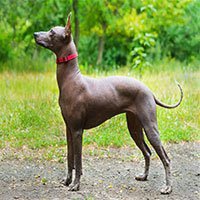
Xolo’s are ancient Aztec dogs that originated in Mexico. These dogs were known to be treasured by the Aztecs and are a national treasure of Mexico. They were so important; they were sacrificed with their owners to help them guide them to the afterlife.
They can grow up to 18 to 23 inches in height and weigh 30 to 55 pounds. Their main feature is the almost hairless body with a dark-purplish hue to it. They have hairs but with flat hairs and or are completely hairless. Their sizes also vary with the full small, medium, and large sizes.
Very weirdly, these dogs are quite healthy despite being purebred and all that. Their grooming is also quite easy, with only the major factor of skincare. Aside from that, these Anubis(an ancient deity from Egypt) looking dogs are quite easy to handle.
6. Xanthippe’s Shrew
Crocidura Xantippe is a shrew that originates from Tanzania and Kenya. They are small shrews with dark bluish and grey fur. They live in burrows and often eat insects.
They can grow to 3.5 cm and weigh anywhere from 50 to 80 grams. These mammals have the unique ability to lose 50% of their body weight and shrink even bones to cope with winter.
7. Xami hairstreak
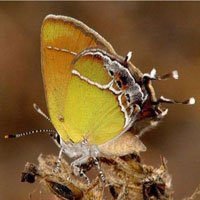
Callophrys Xami is a rare species of butterfly that originates from southern parts of Arizona and Texas.
These butterflies have a wingspan of 2.35 to 2.85cm wingspan on average. Their wings have a postmedian white line, and they also have a green and yellowish color on the underside of the hindwing.
The male Xami hairstreak has a very nasty and territorial behavior. They often drive away any other butterflies from where they live. This often causes some species of butterflies to get displaced entirely. They are often regarded as an invasive species by many biologists.
8. Xantus’ Murrelet

Xantus Murrelet is a type of sea bird species that resides in California. They are Scripp’s Murrelet and Guadalupe Murrelet.
These birds are tiny, and they are often predated by predators becoming endangered. This happened due to the birds losing their homes because of oil spills by human ships.
This bird has a sharp thin bill, a small body, and a white auk. Xantus Murrelet’s feed on small fish and crustaceans that swim by them.
9. Xingu Corydoras
Corydoras Xinguensisis a freshwater fish from the tropics of South America, the upper Xingu river basin in Brazil. These fish are tiny and often live in thick underwater vegetation. They are nocturnal and often go out at night.
Xingu Corydoras grows around 3.7 cm on average. Their body is grey with black polka dots all over it, and they have translucent fins. They feed on plants, insects, and other smaller crustaceans.
They have spines on the tip of their fins, which are venomous to humans and can cause minor damage. Carrying them in plastic bags can get them raptured.
And their fragile bodies are scaleless. Having any amount of salt near them can cause them harm. They cannot live in an aquarium that has salty water in it.
10. Xenops
Ovenbirds or Xenops is a genus of birds that are found predominantly in Mexico, Central America, and South America. They mainly live in rain forests and have three species.
These birds have a very narrow and triangular bill that has a dull tip almost. These birds have long tails and wings striped with black, brown and the back is also brown.
They prey on insects that live under the bark of trees and around the trees. They have high mobility on the bark of trees and can move laterally with ease.
11. Xucaneb Robber Frog
The robber from or Craugastor xucanebi is an endemic species of form found in Guatemala, Mexico. They are found in the Sierra de los Cuchumatanes and Sierra de las Minas. They often live in high altitudes, around 600 to 1200 meters above sea level.
There is no credible information as to why these frogs have robber in their name, and we can only guess as to why they were named that.
These frogs feed on smaller insects and are often found in undergrowth and shrubbery. They feed on small larvae and flying insects or any insects they can find.
This frog is endangered due to deforestation. They are so sparse that even sighting 6 or 7 of these frogs in weeks is a normal case.
12. Xenicus gilviventris
The New Zealand rock werns are small species of birds found in New Zealand. These birds live in the alpines and have a very unique place among birds.
These birds are more land animals than birds, and this is because they jump and hop around more than they fly. They are not even known to go above 2 meters of the ground.
They live quite high, their general distribution is around the elevations of 900m to 2500m above sea level.
These birds are very light, about 16 grams on average, and grow up to 10 cm at most. They sport a They feed on seeds on the ground, insects, and fruits too.
They are often in pairs and sing melodies with each other. They live in a tunnel nest and guard their territory.
These birds are endangered due to mammals that have been introduced to New Zealand.
13. Xenoceratops
Xenoceratops foremostensis is a dinosaur from the Cretaceous period. It lived in the place known as Alberta, Canada, to us now. The first fossil for this dinosaur was discovered in 1985 by Wann Langston Jr.
These animals were herbivores and were mostly terrestrial, barely ever going in water. They are depicted to have leathery outer skin and tapir-like patterns, with plenty of horns on their alien-like head.
14. Xanthichthys
Triggerfishes are fish that live in the reefs of the Indian, Atlantic, and Pacific oceans. There are 6 species of the Xanthichthys triggerfishes. They inhabit the tropical and subtropical parts of their respective oceans.
These fishes come in various sizes and colors and are known for the beautiful dots and lines on their body. The designs on these fish can get very elaborate and intricate.
They live near shallow coastal regions of archipelagos and islands like Hawaii. These fish feed on any spiked and shelled creature.
Some of these fish can be eaten, but some are toxic too.
15. Xenarthra

The Xenarthra is a prehistoric lineage of animals that were compromised of mammals like sloths, armadillos, and anteaters.
They were named for their backbones., which had extra joints not normally seen in most animals. These helped them specialize in digging and many other activities with their claws.
And obviously, of the many prehistoric lines, around 31 different living species are present on Earth.
To Conclude
These 15 animals (not really, some were a bunch of animals or species of animals) are unique in their own regards. The letter X has a very unique tinge to it when naming a creature.
Tags: animals that begin with x, animals that start with x, animals that begin with an x, animal name that starts with x
Related Links:
How Long Do Dogs Live – Does Their Food Affect Their Life Span?
Dog Eye Infections, Dog Eye Problems, Dog Eye Diseases
A Short List of Top Hypoallergenic Dogs
Dog Biting People – How to Prevent?
Smells in Dogs and How to Get Rid of Them?
Ibuprofen for Dogs — Dog Pain Medications
Choosing The Perfect Bed For Your Dog
A Reflective Dog Vests Has Saved My Pet’s Life
My Dog is Scared of Everything all of a Sudden
Golden Retriever Puppy Checklist
Guard Dog Training and Barking Despotism
Change Your Dog’s Food With These Five Brands
Learn Body Language to Train Doberman Pinschers
Dog Parenting Tips – How to Stop Excessive Barking in Dogs?
Tips About Attack Dog Training You Need To Know
Dog Food Reviews, Ratings and Guideline
Puppy Care and Training
6 reasons that the pit bull you’re afraid of isn’t the dog that’s going to bite you
Agility Dog Training — Type of Agility Dog Training
Bird Dog Training Review
POTTY TRAINING – THE REAL STORY OF MY BABY
Dog Food Podcast
Hill’s Presciption Diet R/D (Dry)
Hill’s Prescription Diet CD Canine
Country Vet Choice Dog Food
Top Dry Dog Food in 2018
Purina Moist and Meaty Dog Food (Semi-Moist) – The Honest Review
Build A Relationship With Your Dog
Dog Care Tips and Dog Food Reviews
10 tips for travelling with dogs
HAPPY NOT TO BE HAPPY IN SAYULITA
A Brief description of Toy Poodles
8 Helpful Tips for Keeping Your Dog At a Kennel
Clingy Dogs: Is Your Dog a Velcro Dog?
What is a Velcro Dog Breed?
Why Dog Ramps are Perfect for Pets with Disabilities?
Dog Clothes for the Upper Class
ASPCA® Partners with IBB Group of Companies for Unique Jewelry Collection
How to Keep a Dog from Digging Under the Fence
Tips For Dog Obedience Training
The Right Way To Train Your Dog
Dog Frisbee — a favorite game of dogs and their owners
Steps To a Well Behaved Dog
Dog Beds — What Kind of Dog Beds Does Your Dog Really Need?
How to Bathe Your Dog?
Funny Dogs That Can Entertain You
Dog Health Tips: How Do You Tell If a Dog is Sick?
A Brief description of Toy Poodles
Hypoallergenic Dog Food – Natural Ingredients
A Short List of Top Hypoallergenic Dogs
